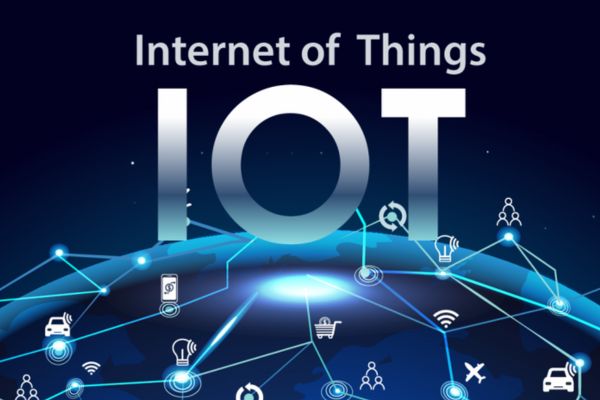The Internet of Things (IoT) has become an indispensable part of the modern world. From smart homes and wearables to connected cars and industrial machines, IoT is rapidly reshaping how we interact with our environment. With IoT technology growing at an unprecedented rate, the market is on the verge of a transformation that promises to redefine industries across the globe.
IoT Market Growth at a Glance
As of 2024, the global Internet of Things (IoT) market size is valued at USD 500.88 billion, and it is forecasted to soar to over USD 3,874.18 billion by 2034. This represents a robust compound annual growth rate (CAGR) of 22.7% from 2024 to 2034. Such rapid expansion highlights the immense potential IoT holds in reshaping the global technological landscape.
Factors Driving IoT Market Growth
- Technological Advancements
IoT technology is experiencing rapid innovation across hardware, software, and connectivity platforms. Key advancements in cloud computing, 5G networks, and AI are facilitating smarter and faster IoT solutions. The ability to process and analyze vast amounts of data in real-time has spurred growth in industrial automation, healthcare, and consumer applications. - Smart Homes and Consumer Devices
The smart home market is one of the most visible segments of IoT. With consumers increasingly adopting smart thermostats, lighting systems, security cameras, and voice assistants, the demand for connected devices has surged. As smart home technology becomes more affordable, it is expected to continue driving market growth. - Industrial IoT (IIoT)
The Industrial Internet of Things (IIoT) is transforming industries such as manufacturing, energy, and logistics. By integrating IoT sensors and devices with industrial machines, companies can achieve higher efficiency, better predictive maintenance, and improved supply chain management. This has resulted in significant cost savings and operational improvements. - Healthcare and Telemedicine
IoT is revolutionizing healthcare by enabling remote patient monitoring, smart medical devices, and telemedicine solutions. With an aging global population and an increasing need for healthcare efficiency, the adoption of IoT in healthcare is expected to grow substantially. IoT-based devices such as wearables and connected diagnostic tools are empowering patients and doctors with real-time data for better decision-making. - Smart Cities and Infrastructure
Governments worldwide are investing in smart city projects, integrating IoT solutions to enhance urban infrastructure. From traffic management to energy-efficient lighting systems and waste management, IoT is helping cities become more sustainable, safe, and livable. This trend is expected to fuel continued growth in the IoT market.
Investment Strategies in IoT
For investors looking to gain exposure to the IoT sector, several strategies can be employed. Here are some of the key approaches:
1. Venture Capital in IoT Startups
Venture capital (VC) investors play a crucial role in the early-stage growth of IoT startups. Many IoT innovators are emerging as part of the next wave of technological disruption. VC funds that target startups in IoT-focused areas, such as smart cities, industrial automation, and IoT security, stand to benefit from the massive growth potential of these companies. Identifying and supporting disruptive IoT technologies early in their lifecycle can result in high returns as they scale up and attract more significant investments.
2. Public Market Investments
Several publicly traded companies have already established themselves as leaders in the IoT space, making them prime candidates for investment. Companies involved in the development and production of IoT hardware, software, and connectivity platforms are already benefitting from the growing demand for connected solutions. For example:
- Semiconductor Companies: These companies provide the necessary chips for IoT devices. Examples include Intel, Qualcomm, and NXP Semiconductors.
- Cloud Providers and IoT Software Companies: Firms offering cloud platforms and IoT data analytics software, such as Amazon Web Services (AWS), Microsoft Azure, and PTC, are benefiting from IoT’s growing need for scalable infrastructure and data solutions.
- Telecommunications Companies: As IoT devices require reliable connectivity, telecom giants like AT&T, Verizon, and China Mobile are well-positioned to profit from the expansion of IoT ecosystems.
3. Exchange-Traded Funds (ETFs)
For those who prefer a diversified approach to investing in IoT, Exchange-Traded Funds (ETFs) focused on technology, robotics, and IoT-related sectors can be an excellent choice. These ETFs allow investors to gain exposure to a basket of companies within the IoT space, spreading risk while still benefiting from the growth of the overall market.
4. IoT-Related Real Estate Investments
The rise of smart cities and IoT-powered infrastructure has led to significant investments in real estate projects that integrate IoT technology. Real estate developers are increasingly incorporating IoT solutions in their designs, such as smart building systems, energy management, and connected public spaces. Investors can benefit from these projects through real estate investment trusts (REITs) or direct investments in smart properties.
Regional Outlook
North America is currently the dominant region in the IoT market, driven by early technology adoption, a robust tech ecosystem, and high demand for IoT solutions in healthcare, manufacturing, and automotive sectors. However, the Asia Pacific region is expected to witness the highest growth rate over the next decade. With rapidly expanding economies like China and India, the adoption of IoT technologies in industries such as manufacturing, agriculture, and smart cities is poised to accelerate.
Europe is also making significant strides in IoT adoption, particularly in industrial IoT and smart city initiatives. The European Union has been at the forefront of encouraging IoT innovation through various funding programs and regulatory frameworks to enhance the digital economy.
Challenges and Risks
While the potential of the IoT market is enormous, there are several challenges to overcome. Security remains a top concern, with the growing number of connected devices creating a larger attack surface for cybercriminals. Ensuring data privacy and implementing strong security measures are critical for the continued success of IoT.
Interoperability is another challenge, as different IoT devices and platforms often struggle to communicate with one another. Standardization of protocols and interfaces is essential for seamless integration and functioning across diverse IoT ecosystems.
Moreover, concerns regarding data storage and processing capabilities will need to be addressed as IoT generates massive amounts of data. This will require advanced cloud infrastructure and analytics platforms to manage and extract value from the data.
Internet of Things (IoT) Market Top Companies:
- Intel Corporation
- Hewlett Packard Enterprise
- Sap SE
- Bosch Software Innovation
- Amazon Web Service
- Microsoft Corporation
- Oracle Corporation
- Cisco Systems, Inc.
- IBM Corporation
The Future of IoT
The next decade holds immense promise for IoT, with industries and consumers alike benefiting from smarter, more connected systems. As 5G networks roll out globally, the IoT landscape will become even more dynamic, enabling faster data transmission, lower latency, and the ability to support an even greater number of connected devices.
From autonomous vehicles to connected factories and smart cities, the future of IoT is limitless. The market will continue to evolve, presenting exciting opportunities for innovators, entrepreneurs, and businesses looking to tap into this growing technological frontier.
As we look toward the future, it’s clear that the Internet of Things is not just a trend but a fundamental shift in how the world operates. With a projected market size of nearly USD 3.9 trillion by 2034, the IoT revolution is just getting started.

















